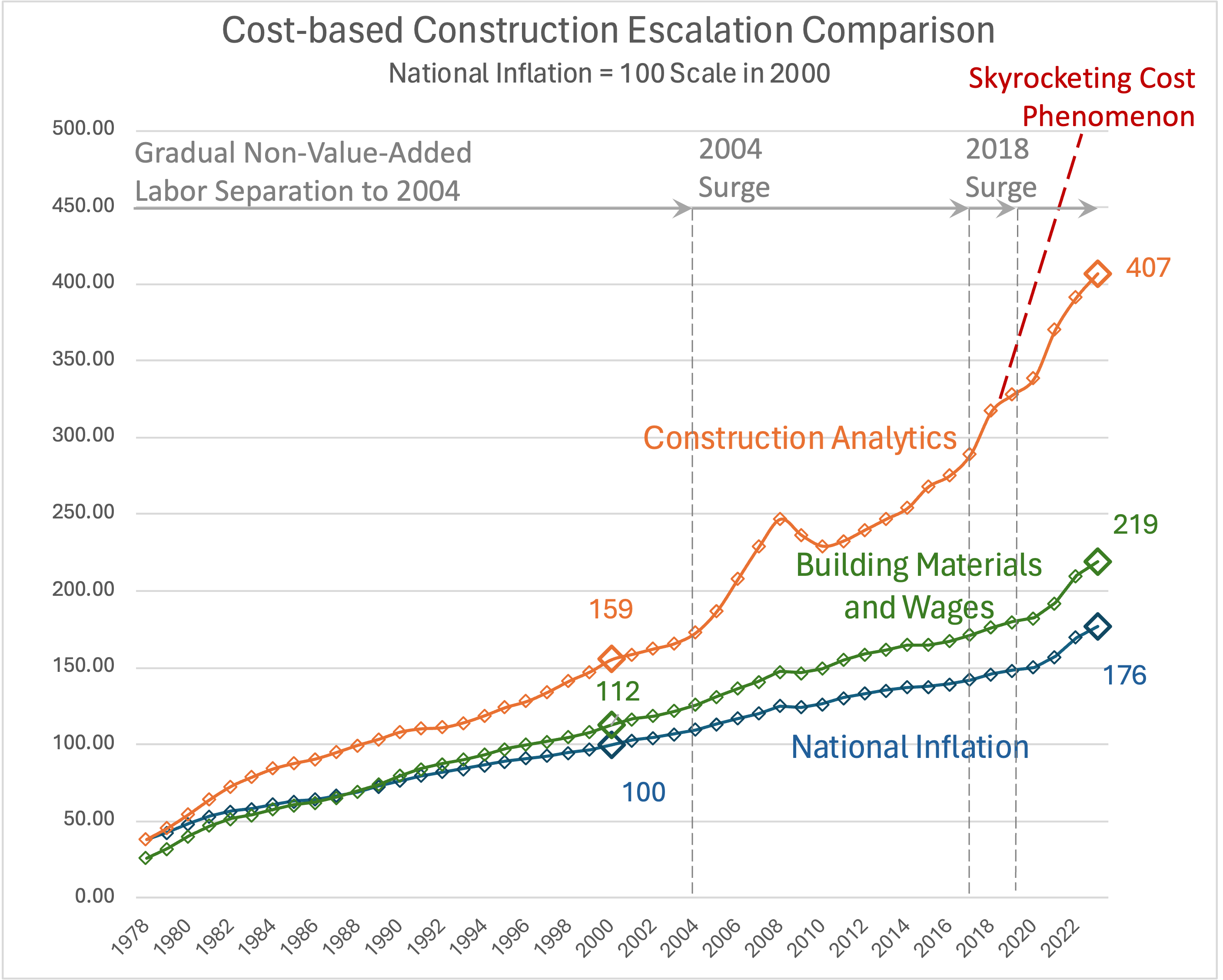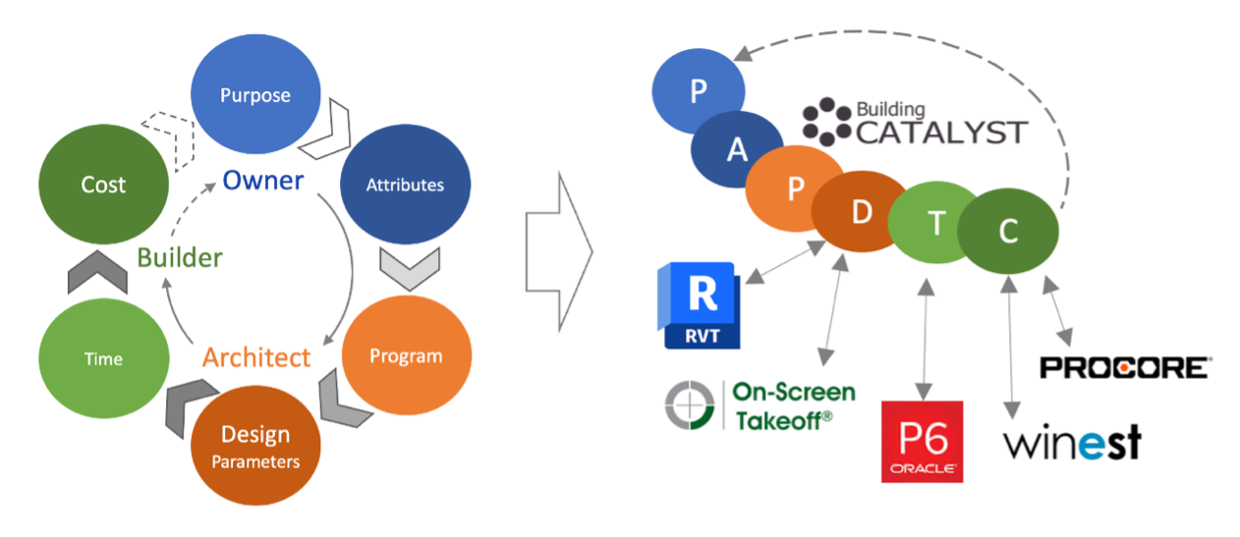Today’s construction costs are surging to unprecedented levels. Building material costs and wage rates, however, have increased only a little more than national inflation. Figure 1 shows cost surges in 2004 and 2018. But these surges pale in comparison to more recent and detailed analysis that indicate a skyrocketing trend in healthcare projects.
The problem is not in material costs, wage rates, or direct labor productivity. Today's electrician, for example. doesn’t pull less wire per hour than yesteryear's. Regulation and more sophisticated systems account for a relatively small portion of the variation.
The main problem is that, as McKinsey claims1, our current cost-plus contracting structures are mis-aligned. For several decades, designers, builders, and subcontractors calculate profit based on the construction cost and, in many cases, billable hours. Risk and uncertainty continue to increase due to lack of objective knoweldge. This causes builders to shape the highest budgets the owner can tolerate. It reduces their risks and increases the profit potential, but drives up the owner's costs.
The solution, therefore, is simple. We must change the designer and builder profit calculation from an effort and cost-plus to a value-added basis - that reduces waste in time and cost. Building Catalyst provides the means to make this change. A contracting alternative is now available that creates a win-win, value-based, proposition for owners, designers, and builders. Like in manufacturing, construction profit should improve as we reduce cost and effort.
Figure 1 - Construction-related Escalation2
All that's needed is for a small group of interested owners, builders, and designers to work together to set the vision and strategy to modify and re-align the contracting compensation structure. This is the first step. In doing so, we can re-align and structure our data, technology, and supporting processes.
We've known for years that fragmentation is a huge problem. Despite attempts to solve this, every component, process, standard, and technical solution still operates in a silo. Figure 2 illustrates this - just in the preconstruction stages. Every person, department, organization, and building team operates in an information and one-off process silo.
Figure 2 - Construction's Current Siloed State
There is no relationship between any of these aspects of the building process and the building’s purpose. For lack of a knowledge system, every supporting data or information transaction between component groups or processes requires a manual action. A flood of new technologies all operate within siloes, further entrenching our siloed state - to the detriment of the whole system. Technology costs increase with no measurable value improvement.
Building CATALSYT provides the first knowledge system needed to replace the fragmented and manual state of construction. Figure 3 demonstrates how all data can be organized into a system of causes (purpose and attributes) and effects (program, parameters, time and cost). It also shows how detailed technology applications can be networked via CATALYST.
Figure 3 - Construction as a System
There are four major sequential breakthroughs that CATALYST provides:
- Planning, Impartial Budgeting and Cost Management – Giving owners control and objective knowledge to offset bias inherent in the current contracting approaches.
- Rewiring Contracting Structures – Flipping the design and construction profit motive that will reward reduction in cost and effort (billable hours). It's a simple as changing the profit calculation from cost-plus to value-based.
- Consensus Data Standards and Structures – Applying standardization, integration, and automation to design, procurement, and construction.
- Objective Measurement System – Pursuing true process improvements through measurement of variation against objective standards.
With good data, Building CATALYST is already able to provide the first of these breakthroughs. So, owners and builders can get started by correcting and/or preventing problem child projects. The technical standards and processing methodology are in place, and tested, to start rolling out the other three.
If interested in discussing or scheduling a live demo, feel free to Contact us.
____________________________________________
End note 1: Refer to the 2017 McKinsey Report "Reinventing Construction – the Route to Higher Productivity"
End note 2: Construction cost escalation sources:
Construction Analytics (https://edzarenski.com/).
Construction Wages: fred.stlouisfed.org/series/CES2000000008
Producer Price Index - Construction Materials: https://www.statista.com/statistics/195382/us-producer-price-index-of-construction-materials-since-1990/
National Inflation Rate (https://www.usinflationcalculator.com/).


